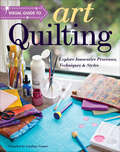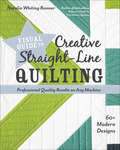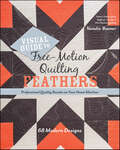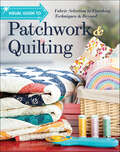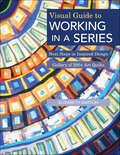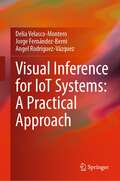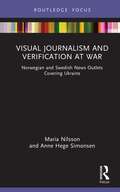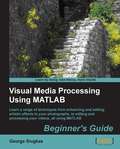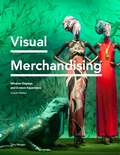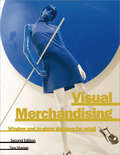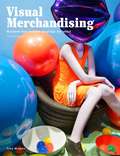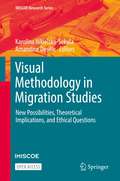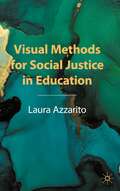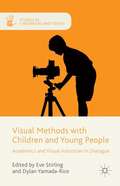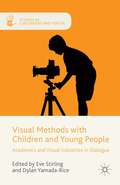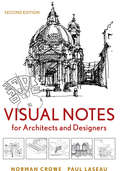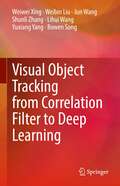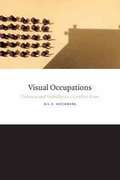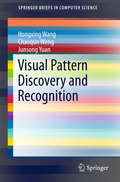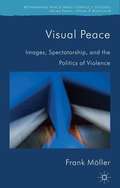- Table View
- List View
Visual Guide to Art Quilting: Explore Innovative Processes, Techniques & Styles
by Lindsay ConnerThis visual reference will help anyone inspired to make art quilts gain the practical tools and inspiration necessary to translate your ideas to fabric. Start on the path to art quilting success! For anyone inspired to make art quilts, this visual reference includes step-by-step photos and illustrations to guide you on your creative journey. Dip your toes in the water with an introduction from some of the biggest names in quilting arts to design theory, supplies and tools, and working with fabric. Practice surface design, embellishment, and quilting by hand and machine as you learn a variety of finishing techniques to turn your unique ideas and imagery into art quilts. • Expand your art quilter&’s toolbox with helpful lessons, plus step-by-step photos and illustrations • Study dyeing and printing on fabrics, embellishment, quilting, and working in a series • Gain the practical tools and inspiration you need to finally translate your ideas to fabric
Visual Guide to Creative Straight-Line Quilting: Professional-Quality Results on Any Machine
by Natalia Whiting BonnerDiscover how to machine quilt using straight lines with one of 48 quilting ideas and 13 variations, from the author of Modern One-Block Quilts.Are feathers and swirls your fallback? Learn how satisfying it is to quilt with only straight lines! Quilting expert Natalia Bonner shares sixty new straight-line motifs to fill in triangles, square blocks, and borders, plus allover designs. Teach your walking foot some new tricks or practice controlled free-motion quilting with rulers. Domestic or longarm machine . . . the choice is yours! Each pattern comes with step-by-step photos, so quilters of all levels can conquer their fears of straight-line quilting, and learn to rock it!• Natalia Bonner fans, unite! Learn forty-eight straight-line quilting ideas and thirteen fun variations• Find freedom in the constraints of straight-line quilting and shine a spotlight on every intriguing angle• Use a longarm or home sewing machine to create geometric perfection, step-by-step
Visual Guide to Free-Motion Quilting Feathers: Professional Quality Results on Your Home Machine
by Natalia BonnerPut a feather in your quilting cap Take the fear out of quilting feathers! Explore 68 modern feather designs with step-by-step guidance from award-winning quilter Natalia Bonner. Quilt stunning feathers on a variety of blocks and borders with this beginner-friendly, visual guide. Unlike traditional feather quilting, which relies on exactness and precision, Natalia’s ideas will help you break away from perfection and find creativity in your quilting practice. Use your home sewing machine or a longarm to free-motion feathers with confidence, adding a truly elegant finish to today’s modern quilts. • 68 modern feather designs! Beginner-friendly techniques from best-selling author Natalia Bonner • Kick your feather fears to the curb with an easy-to-use guide for domestic and longarm quilters • Finish blocks and borders with unique feather motifs to complement today’s modern quilts
Visual Guide to Patchwork & Quilting: Fabric Selection to Finishing Techniques & Beyond
by C&T PublishingYour one-stop shop for everything quilting! Absorb the knowledge of more than 20 quilt experts in one place! With hundreds of photographs and illustrations to help you plan your quilting projects, this comprehensive guide answers all of your quiltmaking questions. Included in this comprehensive reference guide: fabric 101; piecing and applique by hand and machine; understanding color, value, and quilt design; start-to-finish quilt construction; quilting motifs, tips, and tricks; beyond the basics; plus a handy index. It's the must-have book for any quilter! • A quilter's complete handbook with 25 block patterns and projects galore • Learn rotary cutting, pressing, piecing, and applique, as well as advanced techniques like quilt-as-you-go, crazy quilting, and more • Pick the right supplies, tools, and fabric every time! All about precuts, colors, and quilt design basics • Finish your quilt like a pro, from the "quilt sandwich" to hand- and machine-quilting motifs to binding
Visual Guide to Working in a Series: Next Steps in Inspired Design
by Elizabeth BartonDeepen your quilt artistry by creating quilts in a series This inspiring guide from art quilter Elizabeth Barton is for quilt artists who have mastered the basics and want to explore deeper levels of creativity and skill. Learn how making a series of quilts can help you generate more ideas, find new subtleties in favorite subjects, and build a body of work for shows. Packed with hands-on lessons and examples, this book will transform your work and enlarge your creative vision forever. • Creative exercises help you develop your own themes and techniques • Includes huge gallery of more than 200 examples from Elizabeth and other working art quilters • Explains how working in a series elevates creativity and artistic depth
Visual Inference for IoT Systems: A Practical Approach
by Angel Rodríguez-Vázquez Jorge Fernández-Berni Delia Velasco-MonteroThis book presents a systematic approach to the implementation of Internet of Things (IoT) devices achieving visual inference through deep neural networks. Practical aspects are covered, with a focus on providing guidelines to optimally select hardware and software components as well as network architectures according to prescribed application requirements. The monograph includes a remarkable set of experimental results and functional procedures supporting the theoretical concepts and methodologies introduced. A case study on animal recognition based on smart camera traps is also presented and thoroughly analyzed. In this case study, different system alternatives are explored and a particular realization is completely developed. Illustrations, numerous plots from simulations and experiments, and supporting information in the form of charts and tables make Visual Inference and IoT Systems: A Practical Approach a clear and detailed guide to the topic. It will be of interest to researchers, industrial practitioners, and graduate students in the fields of computer vision and IoT.
Visual Journalism and Verification at War: Norwegian and Swedish News Outlets Covering Ukraine (Disruptions)
by Maria Nilsson Anne Hege SimonsenConsidering the visual coverage of the war in Ukraine, this book provides critical insights into how newsrooms make use of visual materials, how visuals partake in journalistic storytelling in a modern wartime context, and how visual journalism practices affect the news media’s role as arbiter of accuracy and ethics.Based on a mixed-methods study, including analyses of selected visually driven news stories and interviews with media professionals in Norwegian and Swedish national media outlets houses, this book examines the news media’s approach to the visual coverage of the war in Ukraine following Russian invasion in 2022. The work is theoretically underpinned by ongoing boundary work within journalism, and editorial negotiations over issues such as verification, source criticism, and trust; witnessing and ways of seeing; and ethical gatekeeping in photojournalism. At a juncture of rising concerns over AI, public distrust, and propaganda, this study adds a real-time aspect to these debates and reveals challenges as well as emerging strategies in the unfolding coverage. Furthermore, the comparative Scandinavian context serves to highlight points of tension between the global and the local; between those newsrooms relying on global image brokers and those conducting their own in-house reporting.Written for researchers and advanced students of Visual Journalism and Conflict Reporting, this book is a timely intervention.
Visual Literacy
by James ElkinsWhat does it mean to be visually literate? Does it mean different things in the arts and the sciences? In the West, in Asia, or in developing nations? If we all need to become "visually literate," what does that mean in practical terms? The essays gathered here examine a host of issues surrounding "the visual," exploring national and regional ideas of visuality and charting out new territories of visual literacy that lie far beyond art history, such as law and chemistry. With an afterword by Christopher Crouch, this groundbreaking collection brings together the work of major art and visual studies scholars and critics to explore what impact the new concept of "visual literacy" will have on the traditional field of art history. Contributors: Matthias Bruhn, Vera Dünkel, Jonathan Crary, Christopher Crouch, Peter Dallow, James Elkins, Henrik Enquist, W.J.T. Mitchell, Richard K. Sherwin, Susan Shifrin, Jon Simons, Barbara Maria Stafford, William Washabaugh
Visual Literacy: A Conceptual Approach to Graphic Problem Solving
by Richard Wilde Judith WildeNow in a more affordable format for students, this stimulating hands-on course in creative thinking gets right down to specific design problems and offers viable solutions to them. Nineteen challenging assignments and over one thousand pieces of solution art executed by the authors’ students are presented. Each visual problem shows the actual assignment sheet given to the students and includes an analysis of the problem’s underlying intent, addressing principles such as formal reference, negative-positive relationships, cropping techniques, and other important issues.
Visual Media Processing Using Matlab Beginner's Guide
by George SiogkasWritten in a friendly, Beginner's Guide format, showing the user how to use the digital media aspects of Matlab (image, video, sound) in a practical, tutorial-based style.This is great for novice programmers in any language who would like to use Matlab as a tool for their image and video processing needs, and also comes in handy for photographers or video editors with even less programming experience wanting to find an all-in-one tool for their tasks.
Visual Merchandising Fourth Edition: Window Displays, In-store Experience
by Tony MorganThis comprehensive guide to visual merchandising covers both window dressing and in-store design, as well as all the other elements, real or virtual, used to enhance the contemporary retail experience. Featuring a range of shops, from fashion emporia such as Selfridges, Printemps, and Bergdorf Goodman to small outlets, the book offers practical advice, supported by tips from the most inspiring visual merchandisers and creative directors across the world.It reveals the secrets of their profession and all there is to know about the latest technology, mannequins, props etc. It also examines the psychology and ever-changing trends behind consumer behaviour.Visual merchandising is presented through lavish colour photographs, diagrams of floor layouts and store case studies, and includes invaluable information such as a glossary of terms used in the industry.
Visual Merchandising Fourth Edition: Window Displays, In-store Experience
by Tony MorganThis comprehensive guide to visual merchandising covers both window dressing and in-store design, as well as all the other elements, real or virtual, used to enhance the contemporary retail experience. Featuring a range of shops, from fashion emporia such as Selfridges, Printemps, and Bergdorf Goodman to small outlets, the book offers practical advice, supported by tips from the most inspiring visual merchandisers and creative directors across the world.It reveals the secrets of their profession and all there is to know about the latest technology, mannequins, props etc. It also examines the psychology and ever-changing trends behind consumer behaviour.Visual merchandising is presented through lavish colour photographs, diagrams of floor layouts and store case studies, and includes invaluable information such as a glossary of terms used in the industry.
Visual Merchandising Second Edition: Windows And In-store Displays For Retail
by Tony MorganA great introduction for retail students, this book offers a user-friendly reference guide to all aspects of visual merchandising and covers both window dressing and in-store areas. Using examples from a range of shops, from fashion emporia to small outlets, the book offers practical advice on the subject, supported by hints and tips from established visual merchandisers. It reveals the secrets of their toolkit and information on the use of mannequins, the latest technology and how to construct and source props, and explains the psychology behind shopping and buyer behaviour. This new edition contains new case studies and updated images. Presented through colour photographs, diagrams of floor layouts and store case studies, and including invaluable information such as a glossary of terms used in the industry, Visual Merchandising is an essential handbook for anyone working in and learning about this exciting area.
Visual Merchandising Second edition: Escaparates E Interiores Comerciales
by Tony MorganA great introduction for retail students, this book offers a user-friendly reference guide to all aspects of visual merchandising and covers both window dressing and in-store areas. Using examples from a range of shops, from fashion emporia to small outlets, the book offers practical advice on the subject, supported by hints and tips from established visual merchandisers. It reveals the secrets of their toolkit and information on the use of mannequins, the latest technology and how to construct and source props, and explains the psychology behind shopping and buyer behaviour. This new edition contains new case studies and updated images. Presented through colour photographs, diagrams of floor layouts and store case studies, and including invaluable information such as a glossary of terms used in the industry, Visual Merchandising is an essential handbook for anyone working in and learning about this exciting area.
Visual Merchandising Third Edition: Windows, in-store displays for retail
by Tony MorganA great introduction for retail students, this book offers a user-friendly reference guide to all aspects of visual merchandising and covers both window dressing and in-store areas. Using examples from a range of shops, from fashion emporia to small outlets, the book offers practical advice on the subject, supported by hints and tips from established visual merchandisers. It reveals the secrets of their toolkit and information on the use of mannequins, the latest technology and how to construct and source props, and explains the psychology behind shopping and buyer behaviour. This new edition contains two new case studies, updated images and new material on digital and interactive visual merchandising. Visual Merchandising is presented through colour photographs, diagrams of floor layouts and store case studies, and includes invaluable information such as a glossary of terms used in the industry.
Visual Merchandising Third Edition: Windows, in-store displays for retail
by Tony MorganA great introduction for retail students, this book offers a user-friendly reference guide to all aspects of visual merchandising and covers both window dressing and in-store areas. Using examples from a range of shops, from fashion emporia to small outlets, the book offers practical advice on the subject, supported by hints and tips from established visual merchandisers. It reveals the secrets of their toolkit and information on the use of mannequins, the latest technology and how to construct and source props, and explains the psychology behind shopping and buyer behaviour. This new edition contains two new case studies, updated images and new material on digital and interactive visual merchandising. Visual Merchandising is presented through colour photographs, diagrams of floor layouts and store case studies, and includes invaluable information such as a glossary of terms used in the industry.
Visual Methodology in Migration Studies: New Possibilities, Theoretical Implications, and Ethical Questions (IMISCOE Research Series)
by Amandine Desille Karolina Nikielska-SekulaThis open access book explores the use of visual methods in migration studies through a combination of theoretical analyses and empirical studies. The first section looks at how various visual methods, including photography, film, and mental maps, may be used to analyse the spatial presence of migrants. The second section addresses the processual building of narratives around migration, thereby using formats such as film and visual essay, and reflecting upon the ways they become carriers and mediators of both story and theory within the subject of migration. Section three focuses on vulnerable communities and discusses how visual methods can empower these communities, thereby also focusing on the theoretical and ethical implications of migration. The fourth section addresses the issue of migrant representation in visual discourses. Based on these contributions, a concluding methodological chapter systematizes the use of visual methods in migration studies across disciplines, with regard to their empirical, theoretical, and ethical implications. Multidisciplinary in character, this book is an interesting read for students and migration scholars who engage with visual methodologies, as well as practitioners, journalists, filmmakers, photographers, curators of exhibitions who address the topic of migration visually.
Visual Methods for Social Justice in Education
by Laura AzzaritoThis book makes a case for the usefulness of visual research methods for advancing a social justice agenda in education. The author aims to provide education researchers with a wide range of qualitative visual research tools to invoke different stories, voices, embodiments, and experiences of individuals from marginalized communities; to advance emancipatory research projects; to embrace interdisciplinary knowledge-building; and to counter-narrate Western forms of knowledge, cultures, and values for the reimagining of education for social change. It draws attention to the importance of visual methods in today’s neoliberal landscape of education to speak back to mainstream research and practices, especially when research participants lack words to describe, express, and represent what it means to be impacted by oppression and marginalization.
Visual Methods with Children and Young People: Academics and Visual Industries in Dialogue (Studies in Childhood and Youth)
by Eve Stirling Dylan Yamada-RiceVisual Methods with Children and Young People.
Visual Methods with Children and Young People: Academics and Visual Industries in Dialogue (Studies in Childhood and Youth)
by Eve Stirling Dylan Yamada-RiceThis volume focuses on using visual research methods with children and young people. Featuring insights from academic experts and established professionals from visual industries, it explores a range of issues from visual ethics to children's interaction with place.
Visual Notes for Architects and Designers
by Norman Crowe Paul LaseauThe completely updated step-by-step guide to¿capturing experiences in sketch format-regardless of artistic ability Recording your ideas and observations primarily in pictures instead of words can help you become more creative and constructive on the job, no matter what your level of artistic ability. Featuring completely new coverage of visual note-taking in a digital world, Visual Notes for Architects and Designers, Second Edition demonstrates how to make rapid, notational sketches that serve as visual records for future reference, as well as improve understanding and facilitate the development of ideas. It shows you how to expand your knowledge of a subject beyond what is gained through observation or verbal representation alone. You gain access to simple techniques for collecting, analyzing, and applying information. Crowe and Laseau examine the relationship between note-taking, visualization, and creativity. They give practical guidance on how to develop: Visual acuity-the ability to see more in what you experience Visual literacy-expressing yourself clearly and accurately with sketches Graphic analysis-using sketches to analyze observations Numerous examples demonstrate some of the many uses of visual notes. They help you develop a keener awareness of environments, solve design problems, and even get more out of lectures and presentations. The authors also discuss types of notebooks suitable for taking visual notes. If you want to develop your perceptual and creative skills to their utmost, you will want to follow the strategies outlined in Visual Notes for Architects and Designers, Second Edition. It is a valuable guide for architects, landscape architects, designers, and anyone interested in recording experience in sketch form.
Visual Object Tracking from Correlation Filter to Deep Learning
by Lihui Wang Jun Wang Weibin Liu Weiwei Xing Shunli Zhang Yuxiang Yang Bowen SongThe book focuses on visual object tracking systems and approaches based on correlation filter and deep learning. Both foundations and implementations have been addressed. The algorithm, system design and performance evaluation have been explored for three kinds of tracking methods including correlation filter based methods, correlation filter with deep feature based methods, and deep learning based methods. Firstly, context aware and multi-scale strategy are presented in correlation filter based trackers; then, long-short term correlation filter, context aware correlation filter and auxiliary relocation in SiamFC framework are proposed for combining correlation filter and deep learning in visual object tracking; finally, improvements in deep learning based trackers including Siamese network, GAN and reinforcement learning are designed. The goal of this book is to bring, in a timely fashion, the latest advances and developments in visual object tracking, especially correlation filter and deep learning based methods, which is particularly suited for readers who are interested in the research and technology innovation in visual object tracking and related fields.
Visual Occupations: Violence and Visibility in a Conflict Zone
by Gil Z. HochbergIn Visual Occupations Gil Z. Hochberg shows how the Israeli Occupation of Palestine is driven by the unequal access to visual rights, or the right to control what can be seen, how, and from which position. Israel maintains this unequal balance by erasing the history and denying the existence of Palestinians, and by carefully concealing its own militarization. Israeli surveillance of Palestinians, combined with the militarized gaze of Israeli soldiers at places like roadside checkpoints, also serve as tools of dominance. Hochberg analyzes various works by Palestinian and Israeli artists, among them Elia Suleiman, Rula Halawani, Sharif Waked, Ari Folman, and Larry Abramson, whose films, art, and photography challenge the inequity of visual rights by altering, queering, and manipulating dominant modes of representing the conflict. These artists' creation of new ways of seeing--such as the refusal of Palestinian filmmakers and photographers to show Palestinian suffering or the Israeli artists' exposure of state manipulated Israeli blindness --offers a crucial gateway, Hochberg suggests, for overcoming and undoing Israel's militarized dominance and political oppression of Palestinians.
Visual Pattern Discovery and Recognition
by Junsong Yuan Hongxing Wang Chaoqun WengThis book presents a systematic study of visual pattern discovery, from unsupervised to semi-supervised manner approaches, and from dealing with a single feature to multiple types of features. Furthermore, it discusses the potential applications of discovering visual patterns for visual data analytics, including visual search, object and scene recognition. It is intended as a reference book for advanced undergraduates or postgraduate students who are interested in visual data analytics, enabling them to quickly access the research world and acquire a systematic methodology rather than a few isolated techniques to analyze visual data with large variations. It is also inspiring for researchers working in computer vision and pattern recognition fields. Basic knowledge of linear algebra, computer vision and pattern recognition would be helpful to readers.
Visual Peace: Images, Spectatorship, and the Politics of Violence (Rethinking Peace and Conflict Studies)
by Frank MöllerThis book introduces a new research agenda for visual peace research, providing a political analysis of the relationship between visual representations and the politics of violence nationally and internationally. Using a range of genres, from photography to painting, it elaborates on how people can become agents of their own image.
